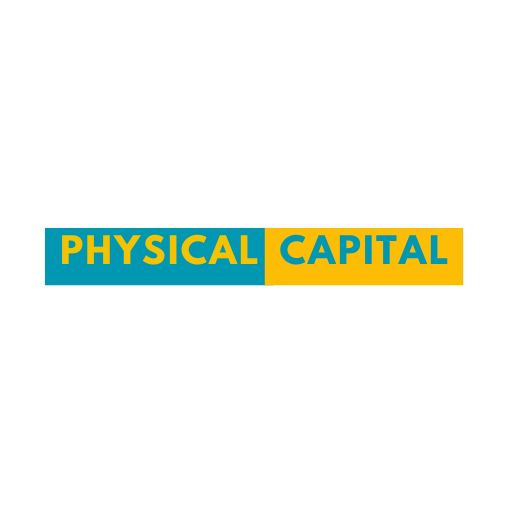Capital is any asset that can be used for productive purposes. It can take on various forms and is generally divided into two categories: physical and human. Physical capital is the tangible assets used in the production of goods and services such as machinery, buildings, and equipment. Human capital is intangible assets related to the educational attainment, knowledge, experience, and skills of an employee.
Both human and physical capital are critical components of a company and its ability to make a profit but they also differ considerably in nature.
Key Takeaways
- Capital is anything that can be used for productive purposes by a firm.
- It’s divided into two categories: physical and human capital.
- Physical capital consists of manmade goods that assist in the production process.
- Human capital is intangible assets related to the educational attainment, knowledge, experience, and skills of an employee.
- Key differences include their functions, tangibility, depreciation, ability to be easily valued, how they’re obtained, and the control that companies hold over them.
Physical Capital
Physical capital consists of manmade goods that assist in the production process. Cash, real estate, equipment, and inventory are examples.
These assets are listed on the balance sheet in order of solvency. Physical capital is often recorded on the balance sheet at its book value: its historical cost less accumulated depreciation. This value is different from market value which is the price an asset would fetch on the current market.
The balance sheet provides an overview of the value of all physical and some non-physical assets. It also provides an overview of the capital raised to pay for those assets which includes both physical and human capital.
Human Capital
Human capital is the economic value of a worker’s experience and skills. It covers assets such as education, training, intelligence, health, and other issues that employers might value such as loyalty and punctuality.
Human capital can’t be physically touched and is often represented by a legal document or paper. Like most other intangible assets, it’s hard to place a value on and it doesn’t appear on a company’s balance sheet.
Human capital is represented by more than the company brand. Harvard University isn’t Harvard University because of its crimson logo. Its value is in its human capital including the knowledge base of its employees. It’s often measured by the quality of the product.
Human capital also refers to the network of the employee base and the general level of influence they have on the industry.
Employees are often an organization’s most valued assets but there are no generally accepted standards for measuring the value of people.
Valuing Human Capital
Intangible assets include intellectual property such as brands, patents, customer lists, licensing agreements, and goodwill. It creates goodwill when one company acquires or purchases another and the purchase price is more than the physical assets that are being purchased.
The difference is recorded as goodwill and one of the largest components of goodwill is human capital. Goodwill is one of the only places where an analyst can find a value for human capital on the balance sheet.
Analysts can also value the impact of human capital on operations with efficiency ratios such as return on assets (ROA) and return on equity (ROE). Investors can determine the value of human capital in the markup on products sold or the industry premium on salary.
A company is willing to pay more for an experienced programmer who can produce a higher-margin product. The value of the programmer’s experience is factored into the amount the company is willing to pay over and above the market price.
Manufacturing companies typically invest more in physical capital. Technology companies often pour more resources into intellectual or human capital.
Human Capital vs. Physical Capital: Key Differences
Human and physical capital are crucial to the operations of a company and its ability to generate a profit. Both assist in the process of creating a product or service but they differ in many ways.
Tangible vs. Intangible
Physical capital consists of tangible, human-made goods such as machinery, buildings, office or warehouse supplies, vehicles, and computers, These are physical objects that can be touched and consumed over time.
Human capital is the skills, knowledge, and capabilities of a company’s employees. These assets are intangible. They’re non-physical.
Ownership
Physical capital is generally bought by a company and it’s used as the company pleases. Human capital is also acquired at a cost but the company has less control over it. Employees with special skills, qualities, and qualifications can eventually choose to leave a company. Physical capital doesn’t make such choices. The company has full control over what to do with it.
Valuation
Human capital is difficult to place a specific value on. Physical capital is relatively easy to measure, quantify, and value. It’s assigned a dollar value on company balance sheets.
Depreciation
Most physical capital such as vehicles, machinery, and computers generally decrease in value over time. Human capital can do the opposite. These skills and qualities theoretically shine and offer greater value as time goes by.
What Is an Example of Human Capital?
Human capital covers the skills, knowledge, education, and abilities an employee provides to a company. Examples can be a degree in a certain subject, possessing technical skills, having years of on-the-job training, or being a naturally good communicator, leader, people person, or problem solver.
What Is an Example of Physical Capital?
Physical capital is goods that can be physically touched and used by companies to make money. That includes buildings, machinery, or even cash.
Which Is More Important, Human or Physical Capital?
Both are important. They often coexist together and complement each other. Companies generally must invest heavily in both physical and human capital to remain competitive although they may prioritize one over the other depending on their line of business.
The Bottom Line
Human and physical capital are the lifeblood of companies and are responsible for helping them to generate profits. Investment in both is deemed critical to compete and grow but they’re very different in terms of their nature and how they’re recognized in a company’s accounts.
Key differences between human and physical capital include their functions, tangibility, depreciation, ability to be easily valued, and the control companies have over them.

